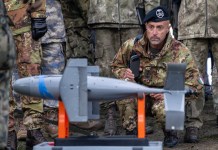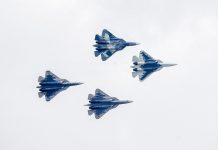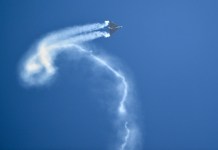With new hypersonic ballistic missile systems such as the Chinese DF-21D and DF-26 and Russia’s Kh-47M2 all capable of striking at hypersonic speeds, having engagement ranges of several thousand kilometres, and able to disable even the largest supercarriers with a single direct hit, the carrier-killer weapons’ continuous expansion has increasingly questioned the viability of the US supercarriers.
Chinese Hypersonic Aircraft May Overwhelm Delhi in an India-China War
The US Navy is analysing the future of its aircraft carrier fleet even as the Secretary of Defense, discontented with current Navy plans, conducts his own assessment. The two studies clearly show the growing concern over how China’s growing might and the Pentagon’s decaying budgets could affect the iconic supercarriers.
Previously, ten Gerald Ford Class 100,000 ton supercarriers were set to replace the serving Nimitz Class ships. Almost identical in size and role, the Ford Class has an edge over its counterpart of possessing more powerful nuclear propulsion systems, superior sensors, more advanced electromagnetic than steam catapults and higher levels of automation that could potentially reduce crew requirements.
Tukrish Drones Outclass Russia-Backed Syrian Forces In Idlib; Moscow Confirms Devastation
The Gerald Ford Class comes at a considerable cost but with adjusted inflation, the last Nimitz Class ship cost $5.5 billion approximately while Gerald Ford Class ships cost 273% higher at $15 billion per hull.
Among the many alternatives considered to the supercarriers, the most notable ones are the 40,000 ton Wasp Class and America Class assault ships that are similar to the Lighting carriers which can deploy up to twenty F-35B vertical landing capable fighters.
Although the F-35C is more capable than F-35B, the latter comes at a lower price and is considered to be more efficient in contested environments. The heavier ships designed loosely on the British Queen Elizabeth Class would be an alternative as it minimizes costs and crew requirements along with deploying twice the number of F-35Bs as the Wasp Class.
Can Iraq Acquire Russian S-400 Missiles With Looming Threats Of US Sanctions?
However, with the start of the Future Carrier 2030 Task Force study, the US navy has set up plans to evaluate the supercarriers, whether they remain cost-effective means of projecting power in the coming decades. The study also aims to assess the viability and survivability of supercarriers against the threat that would emerge in the coming decade.
The development of ‘carrier killer’ weapons has been extensive, from Russia’s deployment of the Zicron hypersonic anti-ship cruise missile, North Korea’s development of its own carrier killer weapons to Russia and China both planning electromagnetic catapult equipped supercarriers of their own, the latter has already begun construction.
JF-17 vs Rafale: Why Pakistani JF-17 Thunder Poses A Serious Threat To Indian Rafale Fighter Jets?
The US is keen to maintain a larger fleet that will ensure the continuing numerical advantage during combat. With the deployment of Stealth drones capable of serving as tankers, the increase in survivability of supercarriers has also been explored.
Along with the stealth drones, higher endurance sixth-generation fighter jets will allow the warships to deploy fighter squadrons that will efficiently hit targets from much longer distances that will keep the ships away from any potential threats.




